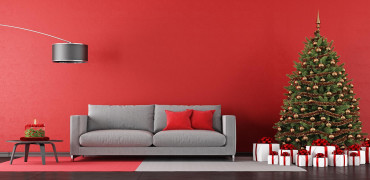As dark and gloomy January comes to an end, Kirsty Hammond takes a look at the value of light in our buildings
The main principles of lighting in architecture can generally be broken down into three parts. Light colour, measuring light and bouncing light. Daylight at noon in the middle of the year is considered the gold standard for white light.
Lighting not only illuminates a space but has a direct and significant effect on our mood. It dictates even how we behave in a building. Our brains make decisions based on what we perceive through our eyes.
Simply put, if a room is brightly lit, our senses are heightened and we are agile, productive. Dimly lit invites us to relax, to chill out, it makes us tired. The brighter the light, the stronger our sensation.
Our senses and body rhythms are calibrated by light, our sleep depends on it.
Adding colour
A blue hue to a light makes people feel more anxious, brighter, warmer lights allow us to feel warm and nourished.
Understanding how lighting affects us can help us design spaces that promote wellbeing, warmth and productivity. LEDs have many advantages, but in this case the ability to control the colour tone of the light is valuable.
We as a species are more productive in early sunshine and many people consider that this early rising catches ‘the worm’. Buildings that require maximum productivity install lighting with sun-like orange colours.
Man-made lighting though isn’t optimal. A combination of warmer and brighter natural light is key, the strategic use of light within our buildings allow us to create environments that, despite being unaware, and that we take for granted contribute directly to our daily lives.
When deprived of light, our conditions for living are upended and confused. Every space has light and it is this that most directly affects our mood. Light creates the atmosphere, and our mood as we step in and out of it. Our senses and body rhythms are calibrated by light, our sleep depends on it.
Even our hormones are attuned to light, our energy levels and activities depend on light, natural and otherwise. The circadian rhythms of light coordinate our metabolic functions with time, with day and night.
Yin and Yang
Light always comes with shadow. The two together give our spaces form and weight, texture and temperature. Natural light brings life to an architectural form.
As we see the Passive House standard sweeping through the construction industry, light of course plays a major part. Passive homes are designed around the use of the sun's natural light. The designer will maximise skylights, light shelves or introduce sun tunnels to usher in as much daylight into a space.
Humans are, as we have discussed, programmed to benefit from daylight. Studies have shown that we spend 90% of our lives indoors! Yet natural light is scientifically proven to improve our health.
Passive homes capture as much natural light as possible but also convert it into heat. Reducing the strain on our environment and our bills.
Poor lighting in your home can contribute to negative energy, depression and vitamin D deficiency. The association between darkness and depression is well established.
Setting the standard
BS EN 17037 is the British standard for daylight in buildings. It specifies the elements for achieving with natural light, it gives an adequate impression of lightness indoors. The two primary reasons for using daylight in an architectural space are psychological benefits and energy saving.
BS 8206-2:2008 illustrates that it is good practice to ensure rooms within a building have a day lit appearance. Daylighting is the controlled admission of natural light, direct sunlight, or diffused skylight into a building in order to reduce electric lighting and save energy consumption.
ADF or the Average Daylight Factor is a measurement of the percentage of daylight received within an internal space. It is recommended that we work to a minimum ADF of 1% for bedrooms, 1.5% for living spaces and 2% for kitchens.
So it is true that light is life enhancing, it is a substance, a literal nourishment. Light is associated with health and vitality. Light in a construction connects us with the constantly changing nature of the day.
Our natural relationship with light is essential. Too little sunlight during the day and too much light at night will lead to an imbalance that we simply can't live with.
Kirsty Hammond is Publisher of Specifier Review




